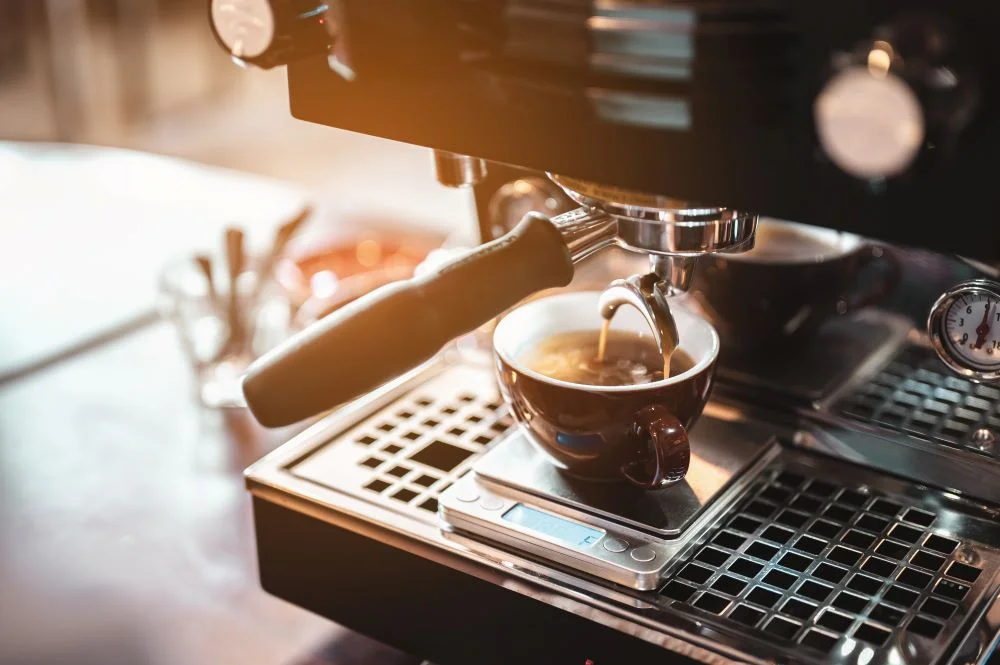The Six Sigma of Coffee Making: a Recipe for Excellence
A while ago I was having a coffee at my local coffee shop and chatting with the owner, Rita, who is also a close friend. I idly asked the question, how do you make good coffee? Without thinking for a moment, she looked me straight in the eye and said, “Amore! You’ve got to make your coffee with love.” With that, she disappeared to serve the couple with a toddler who had just walked through the front door. At the time I thought, what a typically “Rita” thing to say.
You see, Rita can be a bit bohemian at times. Her parents were born in Italy and she was brought up in a really Italian-Australian home. She speaks Italian fluently, learnt her cooking from her mamma, wears lots of black and, for as long as I can remember, has always driven an Alfa Romeo. So my first thought was to dismiss the comment as simply Rita-esque. But as I watched Sam the barista make some lattes and espressos I wondered, was there more to it?
Now Sam is a really good barista. He wins competitions doing this stuff. Whenever someone else makes coffee, it just doesn’t taste the same. Same machine, same beans, different result. I mean, this is coffee right. It’s not rocket science. It’s just running hot water through ground beans. Why does it not taste the same? So I began watching Sam more closely.
Every time Sam crafted a coffee, he calibrated the process precisely, starting with grinding the beans directly into the portafilter – a tool designed to hold ground coffee. Placing the portafilter on a set of precision scales, he measured the exact weight of the coffee before expertly tamping it down with his custom tamper. This ensured optimal density for extraction.
Sam’s attention to detail extended to the machine’s settings, with the ground coffee particle size fine-tuned using a micrometer adjustment. He controlled the grind time, down to a fraction of a second, to achieve consistency. By monitoring the weight of dry beans for each shot, he ensured minimal waste and maximum flavor extraction.
During extraction, Sam managed variables such as draw time to regulate the crema’s thickness and espresso’s bitterness. With a comprehensive table of timings and weights for each blend, he aimed to extract coffee oils efficiently while minimizing bitterness. Constant monitoring allowed him to detect any machine irregularities promptly.
Intrigued by the complexity, I questioned Sam’s approach. His response was simple yet profound: “Because every detail matters.” This commitment to precision and consistency ensures each cup of coffee meets the highest standards – a testament to the artistry and science of coffee-making.
Hmmm, so that’s what loving your coffee means! How good would things be if everyone in an organization loved the product they made? Loved it enough to pay the extra care and attention to make sure the inputs to the process were right each time, every time. Loved it enough to ensure the critical process variables are set just right. Loved it enough to ensure the process is running the way it should.
Excellence is about:
- Understanding what the customer really wants
- Understanding how your process can provide those results
- Taking the effort and care to do it
- And, finally, continuously improving your ability to deliver
A great product that nobody wants ..
The programs we run at Kepner-Tregoe are structured to discover these basic truths. It always starts with what the customer needs to accomplish their goals. A concept we call the Voice of the Customer. Ignore this at your peril, for all the love in the world won’t give you success.
A few years ago, a coffee chain opened multiple outlets across Melbourne, offering a dozen different flavors of coffee, like caramel, hazelnut and toffee. At the time, I asked, “What were they thinking?”
You see, Melbourne has a long history of devoted coffee drinkers. With a rich Euro-Italian history, Melbourne has a very strong café society, with thousands of baristas making arguably the best coffee outside Italy. Children in Melbourne grow up thinking the Italian word for coffee is latté. There’s even a strong coffee tribalism. Melbournians constantly make snide comments about the caffeinated dishwater that passes for coffee in other places. Predictably the coffee chain invasion faltered. They forgot that what coffee drinkers in Melbourne really value is the taste of coffee.
Now, when I travel outside Australia and I’m asked what flavor I would like in my coffee, I answer “COFFEE flavor, please… with a dash of love.”








